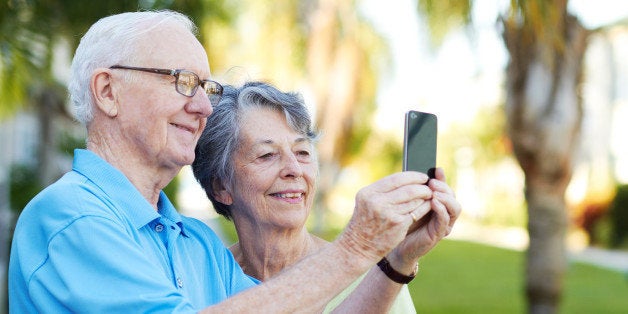
Although millennials are largest users technology, it can be easy to overlook the opportunities computer and mobile devices have to help those 65 and over. Today, 60 percent of seniors are online, growing at more than six percent every year. As technology adoption rates increase among this demographic, below are five ways technology can be used to improve the lives of the elderly.
1. Transportation
Today there are 8 million seniors in the U.S. that are stranded by a lack of public transportation. In fact, nearly 80 percent of seniors today live in car dependent suburban and rural communities. The consequences of this are immense. Previous studies have shown that non-driving seniors make fewer trips to the doctor, fewer trips to family and friends, and fewer trips to restaurants and stores. Fortunately as on-demand technology transportation companies, such as Uber, Lyft, and Sidecar, expand into more rural markets across the U.S., seniors with smartphones are able to call drivers at lower rates while avoiding the strenuous motion of hailing or calling a cab. As the 77 percent of seniors with cell phones slowly upgrade to smartphone devices, transportation apps hold promising options to improve mobility among older adults.
2. Grocery Shopping
While some may view food or grocery delivery services, such as Instacart, as an alternative shopping method for lazy millennials, it can also be the difference between a healthy and unhealthy meal for seniors with fragile health conditions. As adults age, loss of mobility has profound social, psychological and physical consequences, which make basic chores like driving and holding heavy groceries difficult. As the number of on-demand grocery and restaurant delivery services (GrubHub, Amazon Fresh, etc.) become widespread and affordable, these web-based and mobile app delivery services should consider more unique shopping experiences to target older adults (i.e. senior discounts).
3. Senior Care
In the $20 billion in-home senior care market, families face a tough financial burden to help their loved ones with basic lifestyle and health care services. One dark side to the elderly care industry includes the mistreatment of older adults physically, mentally, or financially. However, technology tools are making it easy to select, screen, and track caregivers to avoid instances of potential abuse. Honor, a San Francisco-based startup, is working to provide more transparency to this industry through their on-demand, in-home senior program. Honor offers a $25 per hour caregiver service to elderly homes to help with physical activity, bathing and housekeeping and also has an app with features that allow for quality (tracking of arrival times, departure times, and daily tasks), ratings (feedback from past and fellow clients), and insurance (to ward against general liability, automobile, and theft) to help the caregiving process be more transparent and efficient.
4. Health Tracking
Keeping track of senior healthcare issues can be stressful and confusing, especially for caregivers, but a growing number of affordable smartphone apps and wearable devices have been useful in helping seniors keep track of their daily health-care needs, and nutritional requirements. Smart fitness band products such as UP by Jawbone, Fitbit, and Microsoft Band can help seniors track their daily exercise and physical activity, including heart rate, sleep tracking, and as well as easily share this data with family and friends. Calorie and diet-tracking apps such as myfitnesspal makes it simple to track nutrients consumed. Drug reference apps (Mango Health; Epocrates Rx; Medscape Mobile) and vital sign monitoring solutions (My Pain Diary, Smart Blood Pressure) represent just a fraction of numerous health and wellness solutions benefiting older adults.
5. Isolation and Loneliness
Currently more than 11 million or 28 percent of adults aged 65 and older live alone. Social isolation and loneliness can lead to serious consequences for senior health, including a higher risk of mortality, poor cognitive performance and risk of dementia, increased risk for depression, and high blood pressure. At the same time, seniors are also the fastest growing demographic among social networks. Forty percent of senior users today use social media networks like Facebook to connect with family and old friends, with a prediction of ten thousand new seniors getting online every day for the next two decades. Seniors are also using Twitter as an easy way to navigate resources to follow streams of news information, health information, literary publications, etc. As more seniors overcome the digital divide, social media networks offer a promising virtual place for overcoming instances of isolation in the physical world.
Please share your thoughts in the comments below.
